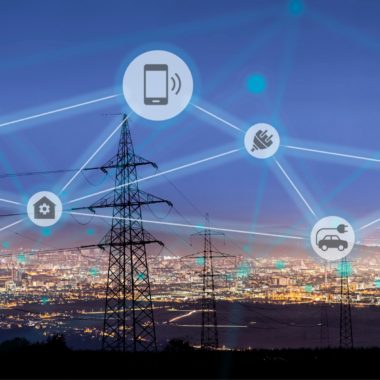As part of our IoT Masters series, I sat down with Willem Strabbing, Managing Director of ESMIG: the European Association of Smart Energy Solution providers, to get his view on why the IoT is so crucial to the energy market, IoT regulations in the smart grids space and the importance of security and interoperability.
Read on to find out more!
SB: What is the one key piece of advice you would give to a business looking to connect their products for the first time?
WS: Before getting started in the IoT, it’s important for a business to define their use cases and technical requirements for the connection. They should then study the currently available IoT technologies and anticipated developments for the near future. Whatever they choose should then be trialed through one or more pilots.
SB: In very simple terms, why is the IoT so beneficial to the energy market?
WS: Energy grid management is a key part of making sure energy provision is both efficient and more environmentally friendly. To succeed in their tasks, grid managers need to receive accurate data from households and buildings, to monitor energy needs in real time and best adjust their systems. This means that energy assets should be connected 24/7 and able to send information on energy consumption or production (for example, solar panels) reliably and securely.
But there are key characteristics of devices in this space. Metering devices require low power usage and limited bandwidth connectivity. Indeed, smart meters can be operating for 10 to 15 years, which requires high-efficiency connectivity, specifically for devices operating on battery. Metering applications typically send low packets of data, making them candidates for low bandwidth connectivity options.
These are just some of the many things that the Internet of Things can offer.
SB: What is regulation like in the IoT, and specifically in the smart grid space? (Any difference between countries? Government implication etc.)
WS: The main regulations are radio spectrum allocation, GDPR and ePrivacy. These are – or can become – enablers but also serious barriers for the introduction of the IoT.
A key element for energy actors is to make sure that the assets they produce or manage are well protected and that their security will be able to evolve. We are speaking about assets which are implemented for long periods – often more than 10 years – and that are attractive for hackers to alter consumption data, to get access to private information or to cause major damage on global grids.
In this context, governments or regulators are calling for specific protection protocols that could be based on solid encryption and authentication tools, protecting devices and enabling regular security updates.
SB: What are the key mistakes that metering companies and businesses can make?
WS: The biggest mistakes that metering companies can make are failing to future-proof their products. In particular, it can be short-sighted of businesses to lock-in with one vendor or to design meters that can´t incorporate future technologies or support updates.
SB: Why is security-by-design so important to smart meters?
WS: Security-by-design is important not only for just smart meters, but for the smart metering infrastructure (AMI). The prevailing customer concern around using smart meters is privacy, so it’s vital that businesses in this space reassure customers and ensure protection of sensitive data around household consumption and presence – such as hackers using metering data to work out when people were home – for example.
The security-by-design approach is also important in preventing other issues, such as the fact the power switch in the meter can be used to cause a mass power cut-off.
A strong security-by-design approach will enable remote security updates, as hacking strategies are getting more sophisticated. Companies can also put customers’ minds at ease thanks to security certification of products and processes that we have developed for the metering industry
SB: How good is interoperability in the smart energy space? Are devices good at talking to each other?
WS: As it stands, interoperability in the smart energy space is a mixed bag.
On one side the interoperability of elements owned and managed by utilities is sufficiently implemented and offers flexibility in the utility infrastructure. The challenge is on the “grid edge” where the utility space is connected to the smart home/building space. On the grid side there are unified protocols and data formats. On the home automation side there is still a wide range of different protocols and data formats. So, alignment is needed here.



